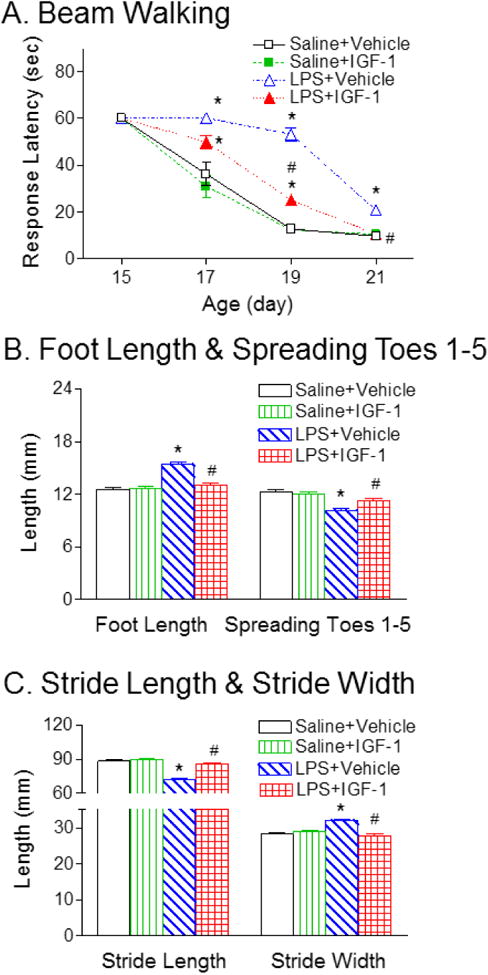Fig. 2.

rhIGF-1 attenuated LPS-induced deficits in beam walking test (A) and gait analysis, as determined by the foot length and spreading of toes 1-5 (B), and stride length and stride width (C) of rats. LPS treatment resulted in increase in latency to travel across the round beam and rhIGF-1 treatment improved LPS-induced impaired performance in the beam walking test. LPS treatment also caused gait abnormalities, as indicated by increase in foot length and stride width, and reduction of total spreading (spreading of toes 1-5) and stride length. rhIGF-1 treatment improved LPS-induced impaired gait performance. The results are expressed as the mean+SEM of twelve animals in each group and analyzed by two-way repeated measures ANOVA for data from tests conducted continuously at different postnatal days or two-way ANOVA, followed by the Student-Newman-Keuls test. *P<0.05 represents significant difference for the LPS+Vehicle group or LPS+IGF-1 group compared with the Saline+Vehicle group. #P<0.05 represents significant difference for the LPS+IGF-1 group compared with the LPS+Vehicle group.
